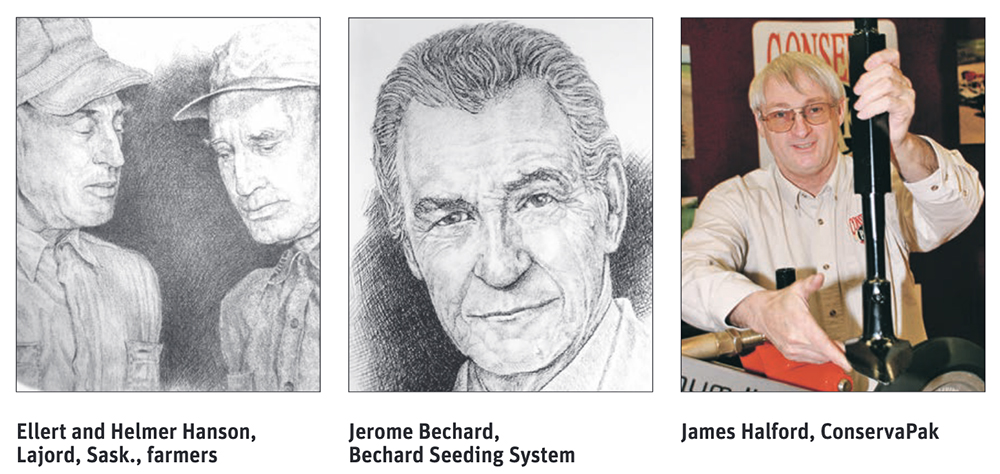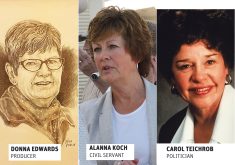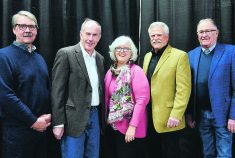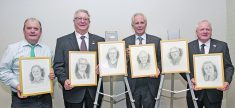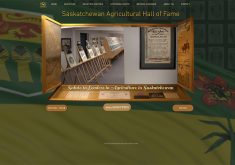Innovation is not the result of chance, it’s the result of action. It’s not a thing to wait for, it’s a thing to do.”(Phil McKinney). These motivated and talented Saskatchewan Agricultural Hall of Fame inductees sought the opportunity to act on their ideas and dreams and we are glad they did.
Ellert and Helmer Hanson (1993), from the Lajord, Sask., district, ushered in the era of swath threshing in Saskatchewan. The brothers were committed to bettering farm practices and increasing farm income through farm machinery innovation.
Read Also

Pakistan reopens its doors to Canadian canola
Pakistan reopens its doors to Canadian canola after a three-year hiatus.
With Ellert’s interest in steam power and strong belief in tractor power, he developed a 30-run seed drill to use with his tractor. He also modified the stook loader to allow for gathering stooks by machine versus horse.
Helmer, meanwhile, was creating a 21-foot disc harrow for International Harvester. Together, they designed a fold-up, hang-up harrow draw bar; combine pickup and wheels; incorporated hydraulics on swather tables, on-the-go combine concave adjustments and levelling augers on combine hoppers.
They are most recognized for introducing swathing and swath threshing in 1926. Disproving the skeptics, their success convinced Case, John Deere and IHC to produce commercial versions of their innovations.
Jerome Bechard (1997) also firmly believed in tractor power versus horse power. He modified his equipment by putting dual wheels on his tractor, adding rubber tires to tillage equipment and creating a levelling hitch for the cultivator.
He was especially noted for his air seeder innovation. Realizing that standard drills didn’t seed at the same rate, Bechard’s design included a caddy behind the tractor to hold the fertilizer and seed. The process also blew the seed into the ground rather than dropping it by gravity. The Bechard Seeding System was manufactured in Winnipeg and subsequently produced by Bourgault.
James Halford (2010) pioneered the development of zero-till farming on the Canadian Prairies. It also became popular in Australia and the United States. A farmer at heart, Halford graduated from the College of Agriculture, and completed his Masters in Agricultural Economics. During his career with the provincial agriculture department, he travelled and met farmers in the United Kingdom through a Nuffield Agriculture Scholarship. He returned to the family farm in the mid-1960s.
Seeing first-hand the effect of wind and water on his soils, Jim began to develop and adapt farm management practices and equipment to create a one-pass system for his operation. In 1983, he built the prototype Conserva Pak and by the late 1980s and early 1990s he was manufacturing direct-seeding equipment. Halford’s efforts are recognized as a best management practice for minimizing greenhouse gas emissions as well as restoring soil health.
Halford’s advice to today’s agricultural innovators involves developing a team that includes ideas, business savvy and a source of income to provide stability until production begins in earnest.
Halford is a firm believer in research, which has led to the development of the Saskatchewan Soil Conservation Association and Indian Head Agricultural Research Foundation. As he noted, “conservation-minded practices he sought to create and utilize , are now being used regularly by prairie farmers”.
When asked what the biggest challenge is facing agriculture today, Jim suggests the lack of understanding of soil and food production versus environment and food production between farmers and consumers is huge. He further explains that the action requires research and a balanced compromise to reach a solution. People tend to focus on one aspect or the other so education and effective communication are essential.
Linda Braun is a Saskatoon freelance writer with an extensive background in the region’s agriculture and food.

